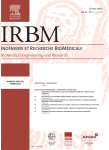
IRBM
Scope & Guideline
Unleashing Cutting-Edge Discoveries in Life Sciences
Introduction
Aims and Scopes
- Biomedical Signal Processing and Analysis:
This area encompasses the use of advanced signal processing techniques, including machine learning and deep learning, to analyze biomedical signals such as ECG, EEG, and sEMG. The goal is to enhance diagnostic accuracy and develop predictive models for various health conditions. - Medical Imaging and Image Analysis:
IRBM publishes research focusing on the development of novel imaging techniques and algorithms for medical imaging modalities like MRI, CT, and ultrasound. This includes segmentation, classification, and enhancement of images to improve diagnostic processes. - Wearable Health Technologies:
Research in this scope involves the design and implementation of wearable devices that monitor health metrics in real-time. This includes the development of algorithms for data interpretation and health condition prediction. - Artificial Intelligence in Healthcare:
The journal emphasizes the application of AI techniques, including machine learning and neural networks, to automate and improve clinical decision-making processes across various medical fields. - Biomechanics and Rehabilitation Engineering:
This area focuses on the application of engineering principles to understand human movement and develop assistive technologies, such as exoskeletons and rehabilitation devices, aimed at improving patient outcomes.
Trending and Emerging
- Deep Learning Applications in Medical Diagnostics:
There is a growing trend in utilizing deep learning algorithms for diagnostic purposes, particularly in areas like cancer detection and cardiovascular diseases. This trend is significant due to the potential for improved accuracy and efficiency in diagnostic processes. - Integration of IoT and Wearable Devices:
The emergence of IoT technologies in healthcare is evident, with increasing research focused on the development of smart health monitoring systems that leverage wearable devices for real-time health data collection and analysis. - Telemedicine and Remote Health Monitoring:
The COVID-19 pandemic has accelerated research in telemedicine, with a focus on remote patient monitoring systems, which are becoming essential for managing chronic diseases and ensuring continuity of care. - Blockchain Technology in Healthcare Data Management:
There is a rising interest in exploring blockchain technology for secure and efficient healthcare data management, particularly for patient privacy and data integrity in electronic health records. - Personalized Medicine and Genomic Data Analysis:
Emerging research is increasingly focusing on personalized medicine approaches, utilizing genomic data and advanced analytics to tailor patient treatments and improve health outcomes.
Declining or Waning
- Traditional Statistical Methods in Medical Research:
There has been a noticeable decline in the publication of studies relying solely on traditional statistical approaches, as more researchers adopt advanced computational techniques such as machine learning and AI for data analysis. - Basic Laboratory Techniques:
Research that focuses on fundamental laboratory methodologies, such as basic in vitro studies, has become less frequent, indicating a shift towards more applied and translational research that emphasizes direct clinical relevance. - Conventional Imaging Techniques:
As advanced imaging technologies and AI-driven analysis gain traction, studies centered on conventional imaging methods without the integration of novel computational techniques are becoming less common.
Similar Journals

Progress in Biomedical Engineering
To elevate biomedical solutions for a healthier tomorrow.Progress in Biomedical Engineering, published by IOP Publishing Ltd, is a premier open-access journal that serves as a vital platform for the dissemination of innovative research in the field of biomedical engineering. With an impressive Q1 classification in the Biomedical Engineering category for 2023, this journal has established itself as a significant contributor to the advancement of engineering solutions that improve healthcare outcomes. Recognized for its high-quality and impactful publications, it ranks 51st out of 303 in its field on Scopus, placing it in the 83rd percentile. The journal aims to foster interdisciplinary collaboration and introduce pioneering methodologies and technologies that bridge the gap between engineering and medicine. By providing a pathway for rapid communication of fundamental and applied research, Progress in Biomedical Engineering is dedicated to shaping the future of healthcare technology. Access to its content ensures that researchers, professionals, and students remain at the forefront of biomedical innovation.
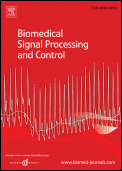
Biomedical Signal Processing and Control
Transforming healthcare with cutting-edge signal processing.Biomedical Signal Processing and Control is a premier academic journal published by ELSEVIER SCI LTD that stands at the forefront of the rapidly evolving fields of biomedical engineering, health informatics, and signal processing. With an impressive impact factor reflecting its scholarly influence and high standards of research, this journal has been recognized in the Q1 quartile category across multiple disciplines as of 2023. Specifically, it holds esteemed positions within Biomedical Engineering, Health Informatics, and Signal Processing, where it ranks in the top tier of its field on Scopus: #19/131, #21/138, and #47/303 respectively. Published continually from 2006 to 2024, the journal serves as a critical platform for researchers, healthcare professionals, and students, fostering innovation in signal processing techniques and their applications in biomedical systems. Access to cutting-edge research and methodologies makes it an indispensable resource for advancing knowledge and practice within these interdisciplinary domains.
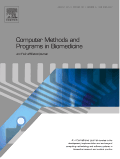
Computer Methods and Programs in Biomedicine
Empowering Biomedical Research through Advanced Computer Applications.Computer Methods and Programs in Biomedicine, published by ELSEVIER IRELAND LTD, is a leading journal at the intersection of computer science and biomedical research. With an impressive impact factor evidenced by its Q1 rankings in multiple categories—Computer Science Applications, Health Informatics, and Software—this journal ranks highly among peer publications, showcasing its significance in advancing interdisciplinary research. Covering a wide array of topics since its inception in 1985, it is particularly crucial for those invested in the innovation of computational methods applied to the biomedical field. The journal has established a strong reputation, with Scopus rankings placing it in the top percentiles across its relevant sectors, including the 14th position out of 138 in Health Informatics. Researchers, practitioners, and students looking to explore current trends, methodologies, and advancements in biomedical applications of computer science will find this journal an invaluable resource.

ANNALS OF BIOMEDICAL ENGINEERING
Catalyzing breakthroughs in biomedical research.ANNALS OF BIOMEDICAL ENGINEERING is a premier journal in the field of biomedical engineering, published by Springer. Established in 1972, this journal has become a vital resource for researchers, professionals, and students engaged in the rapidly evolving domain of biomedical technology. With a commendable impact factor and ranked in the 76th percentile among its peers as per Scopus, it exemplifies excellence in disseminating critical research findings. The journal covers a broad scope of topics related to the integration of engineering principles with medical and biological sciences, facilitating innovations that enhance healthcare outcomes. Although open access is not offered in this journal, it remains an essential platform for scholarly communication, contributing to the continuous advancement of knowledge in biomedical engineering. ANNALS OF BIOMEDICAL ENGINEERING is not only a bridge for academics to share groundbreaking research but also an influential guide for practical applications in medicine and health technologies, making it a fundamental publication for its readership.

International Journal of Biomedical Imaging
Bridging Technology and Clinical InsightInternational Journal of Biomedical Imaging, published by HINDAWI LTD, stands as a pivotal resource in the field of biomedical imaging, bridging the gap between technological innovation and clinical application. Since its inception in 2006 as an Open Access journal, it has become accessible to a global audience, facilitating research dissemination and collaboration. The journal has garnered recognition within the academic community, achieving a notable Q2 category ranking in Radiology, Nuclear Medicine, and Imaging, with an impressive Scopus rank of 16 out of 333, placing it in the 95th percentile of its field. With coverage from 2006 to 2024, the journal encompasses a broad spectrum of studies focused on advancements in imaging technologies, methodologies, and clinical applications, making it an indispensable source for researchers, professionals, and students eager to stay at the forefront of biomedical imaging innovation.

Biomedical Engineering-Biomedizinische Technik
Shaping the Future of Healthcare with Engineering ExcellenceBiomedical Engineering-Biomedizinische Technik, published by WALTER DE GRUYTER GMBH, serves as a pivotal platform for advancing knowledge in the field of biomedical engineering and medicine since its inception in 1956. With an ISSN of 0013-5585 and an E-ISSN of 1862-278X, this peer-reviewed journal offers accessible insights into innovative research and technological advancements that are reshaping healthcare practices and biomedical applications. Although rated in the Q3 category for both Biomedical Engineering and Miscellaneous Medicine in 2023, the journal's impact factor and growing reputation demonstrate its vital role in fostering academic dialogue and collaboration. The journal is based in Germany, while its scope encompasses a diverse range of topics, thus bridging the gap between engineering and medical disciplines. Researchers, professionals, and students alike are encouraged to engage with the content that not only highlights contemporary challenges but also presents groundbreaking solutions in biomedical technology.

Nature Biomedical Engineering
Championing Groundbreaking Studies in Biomedical ApplicationsNature Biomedical Engineering is a premier journal published by NATURE PORTFOLIO, focusing on innovative research at the intersection of engineering and biomedical sciences. With an ISSN of 2157-846X, this journal aims to disseminate groundbreaking studies that advance the field of bioengineering, biotechnology, and medical applications. Since its inception in 2017, it has rapidly earned a reputation for excellence, consistently achieving a Q1 ranking in various categories including Bioengineering and Biomedical Engineering, and receiving acclaim in prestigious Scopus rankings, boasting top positions in the fields of Computer Science Applications and Medicine. The journal operates under a rigorous peer-review process, ensuring that all published articles contribute substantially to the existing body of knowledge. Furthermore, it facilitates a broad accessibility model for researchers and practitioners, bolstering collaboration and innovation within the global scientific community. Nature Biomedical Engineering is not just a publication; it serves as a vital platform for thought leadership in the transformative field of biomedical engineering.
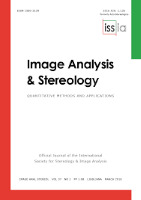
Image Analysis & Stereology
Pioneering Research in Stereology and BeyondImage Analysis & Stereology is a premier open-access journal dedicated to the dynamic fields of image analysis and stereological methods, published by the International Society for Stereology. Since its inception in 2000, this journal has provided an essential platform for researchers and professionals to disseminate their findings and share innovative methodologies across various disciplines, including Acoustics, Biotechnology, Computer Vision, and Materials Science. As a respected publication with a broad scope, the journal holds a Q3 ranking across multiple categories and is indexed in Scopus. With its commitment to advancing research and enhancing academic discourse, Image Analysis & Stereology is vital for anyone involved in quantitative imaging studies, offering valuable insights and access to groundbreaking research in a rapidly evolving landscape.

IMAGING SCIENCE JOURNAL
Innovating Insights in Computer Vision and MediaImaging Science Journal, published by Taylor & Francis Ltd, serves as a vital resource for researchers and professionals in the fields of computer vision, pattern recognition, and media technology. With an ISSN of 1368-2199 and an E-ISSN of 1743-131X, this journal has been fostering scholarly dialogue since its inception in 1997, with a converged content offering extending through 2024. Its categorization in Quartile 4 in Computer Vision and Pattern Recognition and Quartile 3 in Media Technology highlights its relevance and contributions to emerging trends in these domains. Although it ranks 36th in the Engineering - Media Technology category and 96th in Computer Science - Computer Vision and Pattern Recognition, its innovative research and insights continue to attract the attention of scholars dedicated to advancing knowledge at the intersection of imaging technologies. Offering versatile access options, this journal is essential for students, researchers, and professionals aiming to stay informed and engaged in the rapidly evolving landscape of imaging science.
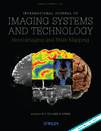
INTERNATIONAL JOURNAL OF IMAGING SYSTEMS AND TECHNOLOGY
Transforming Ideas into Imaging SolutionsINTERNATIONAL JOURNAL OF IMAGING SYSTEMS AND TECHNOLOGY, published by Wiley, is a leading journal dedicated to advancing the field of imaging systems and technologies. With an ISSN of 0899-9457 and E-ISSN 1098-1098, this esteemed journal offers a platform for high-quality research spanning essential interdisciplinary areas, including Biomedical Engineering, Computer Science, and Health Informatics. Recognized for its impactful contributions, it holds a commendable position in the Q2 quartile across multiple categories as of 2023. The journal boasts an excellent Scopus ranking, with notable acknowledgments like rank #49 out of 333 in Radiology, Nuclear Medicine, and Imaging, showcasing its relevance and importance in the academic community. Publishes annually from 1989 to 2024, it aims to bridge gaps in knowledge and foster innovative developments through rigorous peer-reviewed articles. Though it operates under a traditional access model, the journal maintains an accessible repository of cutting-edge research, making it indispensable for researchers, professionals, and students alike seeking to stay at the forefront of imaging technology advancements.